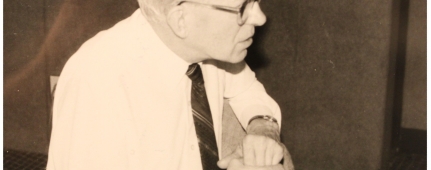Matthew 27:48—Did Jesus die on the cross or just swoon?
Problem: Many skeptics, as well as Muslims, believe that Jesus did not die on the cross. Some say that He took a drug that put Him in a comalike state and that He later revived in the tomb. Yet the Bible says repeatedly that Christ died on the cross (cf. Rom. 5:8; 1 Cor. 15:3; 1 Thes. 4:14).
Solution: Jesus never fainted or swooned, nor was He drugged on the cross. In fact, He refused the drug customarily offered to the victim before crucifixion to help deaden pain (Matt. 27:34), and He accepted only “vinegar” later (v. 48) to quench His thirst. Jesus’ actual physical death on the cross is supported by overwhelming evidence.
First of all, the OT predicted that Christ would die (Isa. 53:5–10; Ps. 22:16; Dan. 9:26; Zech. 12:10). And Jesus fulfilled the OT prophecies about the Messiah (cf. Matt. 4:14–16; 5:17–18; 8:17; John 4:25–26; 5:39).
Second, Jesus announced many times during His ministry that He was going to die (John 2:19–21; 10:10–11; Matt. 12:40; Mark 8:31). Typical is Matthew 17:22–23 that says, “The Son of Man is about to be betrayed into the hands of men and they will kill Him, and the third day He will be raised up.”
Third, all the predictions of His resurrection, both in the OT (cf. Ps. 16:10; Isa. 26:19; Dan. 12:2) and in the NT (cf. John 2:19–21; Matt. 12:40; 17:22–23), are based on the fact that He would die. Only a dead body can be resurrected.
Fourth, the nature and extent of Jesus’ injuries indicate that He must have died. He had no sleep the night before He was crucified. He was beaten several times and whipped. And He collapsed on the way to His crucifixion carrying His cross. This in itself, to say nothing of the crucifixion to follow, was totally exhausting and life-draining.
Fifth, the nature of the crucifixion assures death. Jesus was on the cross from 9 o’clock in the morning until just before sunset. He bled from wounded hands and feet plus from the thorns that pierced His head. There would be a tremendous loss of blood from doing this for more than six hours. Plus, crucifixion demands that one constantly pull himself up in order to breathe, thus sending excruciating pain from the nails. Doing this all day would kill nearly anyone even if they were previously in good health.
Sixth, the piercing of Jesus’ side with the spear, from which came “blood and water” (John 19:34), is proof that He had physically died before the piercing. When this has happened, it is a medical proof that the person has already died (see point eleven below).
Seventh, Jesus said He was in the act of dying on the cross when He declared “Father, into Your hands I commend My spirit” (Luke 23:46). And “having said this, He breathed His last” (v. 46). John renders this, “He gave up His spirit” (John 19:30). His death cry was heard by those who stood by (vv. 47–49).
Eighth, the Roman soldiers, accustomed to crucifixion and death, pronounced Jesus dead. Although it was a common practice to break the legs of the victim to speed death (so that the person can no longer lift himself and breathe), they did not even break Jesus’ legs (John 19:33).
Ninth, Pilate double-checked to make sure Jesus was dead before he gave the corpse to Joseph to be buried. “Summoning the centurion, he asked him if He had been dead for some time. And when he found out from the centurion, he granted the body to Joseph” (Mark 15:44–45).
Tenth, Jesus was wrapped in about 75 pounds of cloth and spices and placed in a sealed tomb for three days (John 19:39–40; Matt. 27:60). If He was not dead by then, which He clearly was, He would have died from lack of food, water, and medical treatment.
Eleventh, medical authorities who have examined the circumstances and nature of Christ’s death have concluded that He actually died on the cross. An article in the Journal of the American Medical Society (March 21, 1986) concluded:
Clearly, the weight of historical and medical evidence indicates that Jesus was dead before the wound to his side was inflicted and supports the traditional view that the spear, thrust between his right rib, probably perforated not only the right lung but also the pericardium and heart and thereby ensured his death. Accordingly, interpretations based on the assumption that Jesus did not die on the cross appear to be at odds with modern medical knowledge (p. 1463).
See All Problems
This excerpt is from When Critics Ask: A Popular Handbook on Bible Difficulties (Wheaton, Ill.: Victor Books, 1992). © 2014 Norman Geisler and Thomas Howe. All rights reserved. Used by permission. Click here to purchase this book.














